Welcome to CounterTobacco.org’s “News and Research Roundup!” Each month we post a summary of the latest research, reports, and news stories on counteracting tobacco product sales and marketing at the point of sale (POS). Keeping up with what’s happening in the POS movement all across the country can help you choose policies and strategies that work best for your community. New research can help provide support for your work and evidence for the importance of the “War in the Store.” Have a story you don’t want us to miss? E-mail it to us!
New Research
E-Cigarettes and Vape Shops
- Vape shop identification, density and place characteristics in six metropolitan areas across the US, Preventative Medicine Reports
- In this study, researchers assessed the density of vape shops and convenience stores that sold vaping products and the corresponding neighborhood demographics in six metropolitan areas – Atlanta, Boston, Minneapolis, Oklahoma City, San Diego, and Seattle. Overall, the researchers identified 459 vape shops and 10,777 convenience stores that sold vaping products. Oklahoma City had the greatest density of both
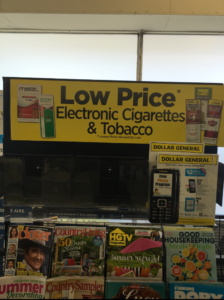 retailers, with 1.7 vape shops and 26.3 convenience stores per 10,000 young adults. Atlanta vape shops were more likely to be in areas with higher percentages of youth, and Boston and Seattle vape shops were more likely to be in lower income areas. In both Boston and Atlanta, convenience stores were more likely to be in areas with a higher percentage of youth and low-income individuals and a lower percentage of non-Whites. Furthermore, San Diego had a greater density of convenience stores in low income areas and Minneapolis had a greater density of convenience stores in areas with more youth and young adults. Learn more about disparities in tobacco retailer density.
retailers, with 1.7 vape shops and 26.3 convenience stores per 10,000 young adults. Atlanta vape shops were more likely to be in areas with higher percentages of youth, and Boston and Seattle vape shops were more likely to be in lower income areas. In both Boston and Atlanta, convenience stores were more likely to be in areas with a higher percentage of youth and low-income individuals and a lower percentage of non-Whites. Furthermore, San Diego had a greater density of convenience stores in low income areas and Minneapolis had a greater density of convenience stores in areas with more youth and young adults. Learn more about disparities in tobacco retailer density.
- In this study, researchers assessed the density of vape shops and convenience stores that sold vaping products and the corresponding neighborhood demographics in six metropolitan areas – Atlanta, Boston, Minneapolis, Oklahoma City, San Diego, and Seattle. Overall, the researchers identified 459 vape shops and 10,777 convenience stores that sold vaping products. Oklahoma City had the greatest density of both
- E-cigarette use and transition in adult smoking frequency: A longitudinal study, American Journal of Preventative Medicine
- Using data from Wave 1 (2013-2014) and Wave 2 (2014-2015) of the Population Assessment of Tobacco and Health Study, researchers determined that adult daily smokers who also used e-cigarettes some or every day at Wave 1 had significantly higher odds of reducing their cigarette smoking frequency at Wave 2. However, former smokers who used e-cigarettes at Wave 1 had significantly higher odds of relapsing and starting up use of cigarettes at Wave 2. Learn more about e-cigarettes at the point of sale.
- Association between federal and California state policy violation among vape shops and neighbourhood composition in Southern California, Tobacco Control
- Through assessments of 122 vape shops in Southern California, researchers determined that vape shops located in predominately White neighborhoods were significantly more likely to display proper “Ask4ID” signage and significantly less likely to offer free samples compared to vape shops located in neighborhoods composed of predominately other racial and ethnic groups. Learn more about disparities at the point of sale.
Menthol and Other Flavored Tobacco Products
- Countering tobacco industry tactics on the economic costs of restricting menthol tobacco, Tobacco Control
- In 2017, Minneapolis and Saint Paul, Minnesota, restricted the sale of menthol tobacco to adult-only tobacco and liquor stores; this restriction came with significant industry opposition and claims of catastrophic economic deterioration and financial loss. This article refutes this claim and provides evidence that the costs of tobacco use outweigh any financial or job loss that may stem from restricting or banning tobacco products.
 Learn more about rebutting economic arguments against point-of-sale policies.
Learn more about rebutting economic arguments against point-of-sale policies.
- In 2017, Minneapolis and Saint Paul, Minnesota, restricted the sale of menthol tobacco to adult-only tobacco and liquor stores; this restriction came with significant industry opposition and claims of catastrophic economic deterioration and financial loss. This article refutes this claim and provides evidence that the costs of tobacco use outweigh any financial or job loss that may stem from restricting or banning tobacco products.
- The actual and anticipated effects of a menthol cigarette ban: A scoping review, BMC Public Health
- In this article, researchers identified and examined 24 studies that assessed the effects of both hypothetical and implemented menthol bans, as well as implemented flavor bans with menthol exemptions. Overall, a review of the studies suggests that implemented menthol bans reduced both menthol and non-menthol cigarette sales and significantly increased quit attempts and smoking cessation; flavor bans, even with a menthol exemption, helped to reduce rates of initiation. In response to hypothetical menthol bans, approximately 25-64% of smokers stated they would attempt to quit and 11-46% of smokers stated they would consider using a different tobacco product, like e-cigarettes, instead. The studies also demonstrated that, while implemented ban compliance was high, the tobacco industry and retailers often attempted to undermine the ban by changing packaging and moving their sales online. Learn more about menthol tobacco products and policies to restrict the availability of these products.
- News story: Menthol cigarette ban in the US may lower number of smokers, Medical
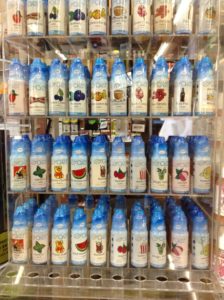 Xpress
Xpress
- Cigarette use before and after the 2009 flavored cigarette ban, Journal of Adolescent Health
- In 2009, the Food and Drug Administration imposed a ban on flavored cigarette products with an exemption for menthol flavoring. In this study, researchers examined past 30-day use of cigarettes in youth (ages 12-17), young adults (ages 18-25), adults, (ages 26-49), and older adults (ages 50 and above) both before and after the ban was implemented. While immediately after the ban menthol use spiked in youth and young adults, overall, the researchers observed significant reductions in youth and young adult cigarette use. The researchers conclude that the ban ultimately reduced youth cigarette use by 43% and young adult cigarette use by 27%. The findings from this study evidence the effectiveness of flavor bans in reducing youth use. Learn more about flavored tobacco products.
- News story: Flavored cigarette ban significantly reduced youth smoking, new study finds, EurekAlert!
International
- E-cigarette marketing regulations and youth vaping: Cross-sectional surveys, 2017-2019, Pediatrics
- Over 12,000 Canadian youth completed cross-sectional surveys annually between 2017 and 2019 to determine changes in exposure to e-cigarette marketing and e-cigarette use over time. From 2017 to 2019, the percentage of respondents who noticed e-cigarette promotions ‘often’ or ‘very often’ approximately doubled from 13.6%
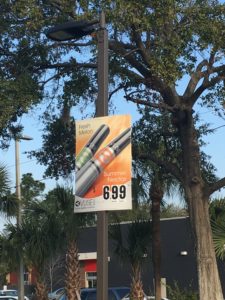 to 26.0%. Exposure to e-cigarette marketing was greater in provinces with fewer e-cigarette regulations and restrictions. Compared to respondents who noticed marketing ‘sometimes’, ‘rarely, or ‘never’, respondents who noticed e-cigarette marketing ‘often’ or ‘very often’ were 41% more likely to vape in the past 30 days, 44% more likely to vape in the past week, and 42% more likely to vape more than 20 days in the past month. Additionally, compared to respondents residing in provinces with more restrictions, respondents residing in provinces with fewer e-cigarette restrictions had a significantly higher prevalence of vaping over the past week and past month. Learn more about e-cigarettes at the point of sale.
to 26.0%. Exposure to e-cigarette marketing was greater in provinces with fewer e-cigarette regulations and restrictions. Compared to respondents who noticed marketing ‘sometimes’, ‘rarely, or ‘never’, respondents who noticed e-cigarette marketing ‘often’ or ‘very often’ were 41% more likely to vape in the past 30 days, 44% more likely to vape in the past week, and 42% more likely to vape more than 20 days in the past month. Additionally, compared to respondents residing in provinces with more restrictions, respondents residing in provinces with fewer e-cigarette restrictions had a significantly higher prevalence of vaping over the past week and past month. Learn more about e-cigarettes at the point of sale. - News story: Study says ad displays in stores boost teen vaping rates, Medical Xpress
- Over 12,000 Canadian youth completed cross-sectional surveys annually between 2017 and 2019 to determine changes in exposure to e-cigarette marketing and e-cigarette use over time. From 2017 to 2019, the percentage of respondents who noticed e-cigarette promotions ‘often’ or ‘very often’ approximately doubled from 13.6%
- Longitudinal evaluation of the impact of standardised packaging and minimum excise tax on tobacco sales and industry revenue in the UK, Tobacco Control
- By May of 2017, the UK had introduced a new minimum excise tax and implemented a requirement of standardized packaging for cigarette and roll-you-own tobacco packs. This study examined sales and industry revenue from before and after these two measures were implemented. Company monthly net revue dipped from €231 million pre-implementation to €198 million post-implementation. Additionally, post-implementation, average monthly sales of cigarettes and roll-your-own tobacco products significantly declined, with an estimated 6.4 million fewer cigarettes being sold each month. These results signify the impact multiple policies, including excise taxes and standardized packaging, can have on tobacco product sales and industry revenue. Learn more about health warnings.
- News story: UK tobacco sales fell faster after plain packaging rules came into force, The Guardian
- Assessing cigarette packaging and labeling policy effects on early adolescents: Results from a discrete choice experiment, Tobacco Control
- In this discrete choice experiment, over 4,200 Mexican adolescents, ages 12-14, viewed eight sets of three cigarette packs and were asked to rank attractiveness, interest in trying, and perceived harm of the different options. Participants found packs with plain packaging and larger health warning labels to be less attractive, less interesting to try, and more harmful; this effect was greatest when the option had both plain packaging and a larger health warning label. Perceptions of attractiveness were most influenced by whether the packaging was plain or not; interest in trying and perceived harm were both most influenced by the brand name listed on the option. These findings suggest that implementation of plain packaging and large health warning labels could reduce adolescent appeal toward cigarettes. Learn more about health warnings.
Other
- A deceptive marketing strategy: An early warning of industry behavior after the premarket tobacco application deadline?, Nicotine & Tobacco Research
- This article highlights potential deceptive marketing that manufacturers may use to circumvent premarket tobacco product applications (PMTAs), such as by claiming their electronic nicotine delivery systems are for aromatherapy purposes rather than tobacco smoking. The article also calls on the FDA to monitor the market for any signs of evasion and deception and to pull any products off the market that do not comply with the PMTA requirement. Learn more about the FDA and point of sale.
- Youth and young adult convenience store behaviors: Findings from intercept surveys, Nicotine & Tobacco Research
- During the summer of 2017, researchers surveyed nearly 1,000 young adults ages
 16 to 25, who were susceptible to or used tobacco products, outside of gas station convenience stores in North Carolina. 85% of the sample reported ever using tobacco and 40% of the sample reported visiting a gas station convenience store at least once per week. One-third of the sample who went inside the store or planned to enter the store purchased tobacco products. This study highlights how gas station convenience stores are key access points for young adults to purchase tobacco products. Learn more about point-of-sale policy solutions, particularly restricting product availability.
16 to 25, who were susceptible to or used tobacco products, outside of gas station convenience stores in North Carolina. 85% of the sample reported ever using tobacco and 40% of the sample reported visiting a gas station convenience store at least once per week. One-third of the sample who went inside the store or planned to enter the store purchased tobacco products. This study highlights how gas station convenience stores are key access points for young adults to purchase tobacco products. Learn more about point-of-sale policy solutions, particularly restricting product availability.
- During the summer of 2017, researchers surveyed nearly 1,000 young adults ages
- The public health gains had cigarette companies chosen to sell very low nicotine cigarettes, Nicotine & Tobacco Research
- Industry documents have shown that cigarette manufacturers were aware that cigarettes were addictive and deadly prior to 1965. The researchers in this study conclude that industry manufacturers had the ability and capacity to lower the nicotine concentration in their products for decades and, had a standard implementation of very low nicotine content cigarettes been enacted years ago, millions of premature deaths attributable to smoking could have been avoided. Learn more about point-of-sale policy solutions.
- Effects of tobacco cigarettes, e-cigarettes, and waterpipe smoking on endothelial function and clinical outcomes, European Heart Journal
- This article provides an extensive, updated report on the health effects of combustible
 tobacco, e-cigarettes, and hookah tobacco. While the researchers support that e-cigarette vapor is less toxic than tobacco smoke, they conclude that e-cigarette smoking leads to significant negative health effects and that the assertion that e-cigarettes are “95% less harmful” (a claim more often advertised in England) should be quickly reassessed. The researchers also emphasize that hookah smoking should not be considered a healthy or safer alternative than tobacco smoking, given the evidence that hookah smoking may lead to serious health consequences. All three tobacco products – cigarettes, e-cigarettes, and hookah – are associated with higher odds of stroke, COPD, coronary artery disease, and myocardial infraction. The researchers conclude that the only safe alternative to smoking is not smoking. Learn more about various tobacco products.
tobacco, e-cigarettes, and hookah tobacco. While the researchers support that e-cigarette vapor is less toxic than tobacco smoke, they conclude that e-cigarette smoking leads to significant negative health effects and that the assertion that e-cigarettes are “95% less harmful” (a claim more often advertised in England) should be quickly reassessed. The researchers also emphasize that hookah smoking should not be considered a healthy or safer alternative than tobacco smoking, given the evidence that hookah smoking may lead to serious health consequences. All three tobacco products – cigarettes, e-cigarettes, and hookah – are associated with higher odds of stroke, COPD, coronary artery disease, and myocardial infraction. The researchers conclude that the only safe alternative to smoking is not smoking. Learn more about various tobacco products. - News story: There’s no healthy alternative to smoking except quitting: Study, S. News & World Report
- This article provides an extensive, updated report on the health effects of combustible
- Analysis of FDA’s IQOS marketing authorization and its policy impacts, Tobacco Control
- This article scrutinizes the FDA’s decision to allow IQOS to be marketed in the United States. The authors discuss how IQOS emits dangerous toxins and that Philip Morris International [PMI] never provided sufficient evidence that the product reduces long-term disease risk. Additionally, the authors note that PMI’s premarket application did not adequately examine the health consequences of dual product use, consider potential youth attraction and use of the product, or evidence that consumers recognize the perceived addiction risk of the product. The authors warn that the FDA’s decision may have significant public health consequences and state that the decision should be of concern since it may be an indicator of how the FDA will reach decisions on the hundreds of other premarket applications. Learn more about the FDA’s ‘modified risk’ authorization of IQOS.
- News story: @FDAtobacco authorized sales of Philip Morris’ IQOS despite scientific evidence of its health risks, UCSF Center for Tobacco Control Research and Education

- Characteristics of proposed and enacted state tobacco control legislation in the United States, 2010-2015, Journal of Public Health Policy
- This study examined all tobacco control legislation introduced across all 50 states from 2010 to 2015. During this time period, a total of 2,801 tobacco control bills were introduced, with state legislature enacting 17.4% of these bills. While tax and clean air bills were most likely to be introduced, both had lower rates of enactment than any other tobacco control bills; bills with the highest odds of enactment were product manufacturing bills. Legislation regulating e-cigarettes had higher rates of enactment than legislation of other tobacco products. Learn more about point-of-sale policy options.
- The World Health Organization’s World No Tobacco Day 2020 Campaign exposes tobacco and related industry tactics to manipulate children and young people and hook a new generation of users, Journal of Adolescent Health
- This commentary summarizes the health risks of conventional tobacco products, heated tobacco products, and e-cigarettes. The article also discusses the World No Tobacco Day 2020 campaign and highlights the tactics the tobacco industry uses to increase youth use of their products. Learn more about the war in the store.
COVID-19
- Tobacco smoking a potential risk factor in transmission of COVID-19 infection, Pakistan Journal of Medical Sciences
- This article suggests that not only are smokers at higher risk of COVID-19 infection but that smoking may actually be a possible mode of transmission. Smoking increases the likelihood of hand to mouth transmission and exhaled smoke, as well as coughing or sneezing after smoking, can launch virus droplets into the air. As well, any sharing of tobacco devices, like e-cigarettes or waterpipes, provides a significant route of possible transmission.
- Medical vulnerability of young adults to severe COVID-19 illness – Data form the National Health Interview Survey, Journal of Adolescent Health
- News story: Smoking habits double number of young people vulnerable to severe COVID-19: study, The Hill
Reports
- The changing landscape: Tobacco and marijuana use among young adults in California, UCLA Center for Health Policy Research
- Using primarily data from the 2018 California Health Interview Survey, this report summarizes patterns and reasons for tobacco product and marijuana use in young adults in California. The report also documents the current policy environment in the state and provides further policy recommendations. While particularly beneficial for Californians, this report has findings useful for localities and states across the US.
- News story: Study shows surge in e-cigarette and marijuana use among state’s young
 adults, UCLA Newsroom
adults, UCLA Newsroom
- Juul & the guinea pig generation revisited: Juul’s spawning of the youth vaping epidemic (2020), Public Health Law Center
- As an updated version of their 2018 report on Juul, this report tracks Juul from 2018 onward. The resource includes updated information on Juul’s marketing efforts, the health consequences of youth use, and the changes in the regulatory and legal environment surrounding Juul and other e-cigarette products.
- Tobacco retail policy trends in 2019: Insights from the field, ASPiRE Center
- Through a compilation of five briefs on retail policy activity, barriers, opposition and preemption, store assessments, and resources, this document provides a snapshot of the tobacco control regulatory environment across 30 US cities.
- Convenience Story News Industry Report 2020 Deep Dive: Tobacco, Convenience Store News
Industry News
- New Newport brands boost overall sales of traditional cigarettes, Winston-Salem Journal
- Philip Morris patents ‘harm reduction’ electronic waterpipe, Tobacco Control
- Cigar groups challenge Philly’s flavored tobacco ban, Law360
- Reynolds Vapor shifts dissolvable nicotine products to Velo brand, Winston-Salem Journal
- Juul files complaint that competitors violated patents, CSP
POS Policy in the Media
E-Cigarettes
- Controversial e-cigarette company Puff Bar says it’s suspending U.S sales, FairWarning.com
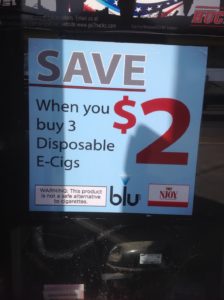
- Hawaii sues e-cig giants Juul and Altria, Honolulu Civil Beat
- Colorado attorney general sues Juul, claims vape company marketed to kids and downplayed health risks, Colorado Sun
- Attorney General Maura Healey suing online vape company ‘Puff Bar’ alleging it sold flavored tobacco products in Massachusetts, Masslive.com
FDA and Federal Policy
- FDA tells court it won’t delay September substantial equivalence deadline, HalfWheel
- FDA authorizes marking of IQOS Tobacco Heating System with ‘reduced exposure’ information, FDA.gov
- Six Thoughts: Appeals court strikes down all FDA cigar & pipe warning labels, HalfWheel
- Court upholds FDA authority to regulate e-cigarettes, nicotine vapor products, CSP
- FDA orders retailers to stop selling 13 tobacco products, CSP
- FDA notifies companies, including Puff Bar, to remove disposable e-cigarettes and youth-appealing e-liquids from market for not having required authorization, FDA.gov
Tobacco 21
- [GA] Lawmakers approve vaping tax, raises age for tobacco products to 21, GPBNews.org
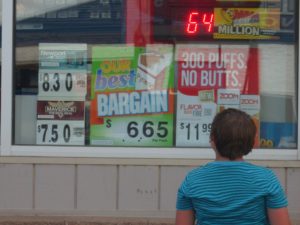
- New laws in South Dakota, Keloland.com
- Pennsylvania’s minimum tobacco purchasing age is now 21, Halfwheel
- Indiana’s tobacco purchasing age increases to 21, Halfwheel
- [IL] Palantine goes beyond state law, bans those under 21 from possessing tobacco, Daily Herald
- [MN] White Bear Township raises tobacco purchasing age to 21, White Bear Press
- Iowa raises age to buy tobacco products to 21, WHO Radio News
- Senate, House pass bill to raise age to 21 for tobacco sales, Fox8Live.com
- Colorado’s Governor signs tobacco purchasing age increase bill, Halfwheel
- [CO] Erie trustees approve increasing tobacco purchase, possession age to 21, Colorado Hometown Weekly
Menthol and Other Flavored Tobacco Products
- California Senate approves flavored tobacco ban, Halfwheel
- [CA] Napa City Council bans sale of flavored tobacco, passes more restrictive smoking ordinance, Napa Valley Register
- [CA] Guadalupe City Council votes on unprecedented tobacco ordinance, Santa Maria Sun

- [CA] Sale of flavored tobacco is now banned in Long Beach, Long Beach Post News
- [HI] Ways and Means passes measure banning flavored tobacco products, West Hawaii Today
- [IL] Chicago ban on flavored tobacco products stalls in City Council committee, Chicago Sun Times
- Hawaii Senate fails to protect kids by voting to allow continued sale of menthol e-cigarettes and cigarettes, Cision PR Newswire
- [CA] Hayward bans flavored tobacco, vaping sales, East Bay Times
- [Worcester, MA] City Board of Health brings tobacco control regulations in line with state law, Telegram.com
Tobacco Retailer Licenses
- Bethlehem, N.Y. approves tobacco retailer license requirement, Halfwheel
- Idaho retailers that sell vape/electronic smoking devices required to get tobacco permit starting July 1, Big Country News
- [Sebastopol, CA] City pursuing creation of tobacco retail license, SonomaWest.com
Health Warnings
- [MD] Attorney General Frosh pushes for graphic image warning labels on cigarette packages, Southern Maryland Chronicle
- California Attorney General joins bipartisan coalition in defendin
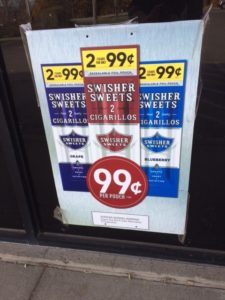 g FDA’s authority to require graphic warnings on cigarette packages, Sierra Sun Times
g FDA’s authority to require graphic warnings on cigarette packages, Sierra Sun Times- Montana joins effort to change cigarette packaging, KTVH.com
Other
- Wisconsin Synar survey: Cigarillos most sold tobacco products to minors, La Crosse Tribune
- Colorado youth survey: Eagle County’s tough tobacco regs already showing an impact, VailDaily
- Smoking adds to the inequity of the coronavirus, Vox
- Hannaford to stop selling tobacco products in all stores in the northeast, MainePublic.org
Find more stories in last month’s News and Research Roundup.
Know of a story that we missed? Email us, and we’ll be sure to include it in next month’s roundup!


